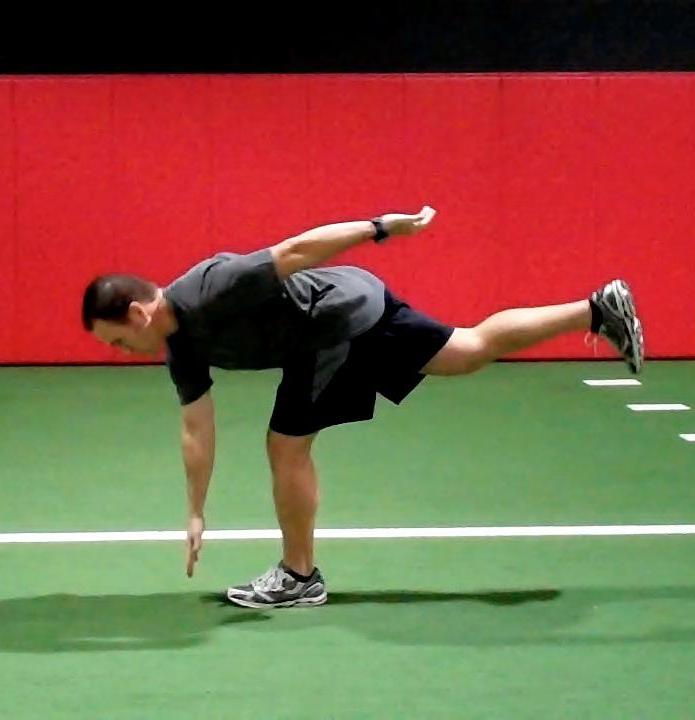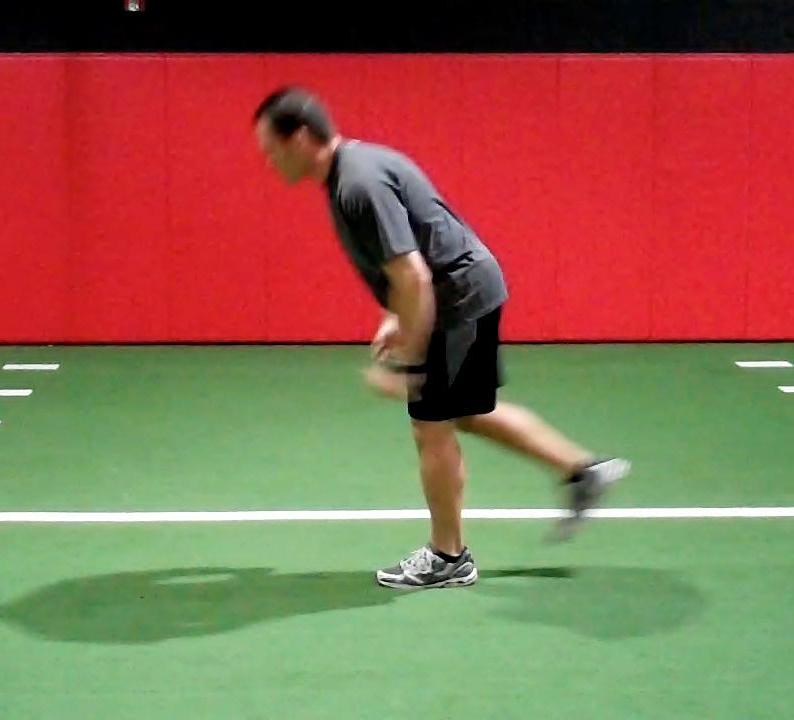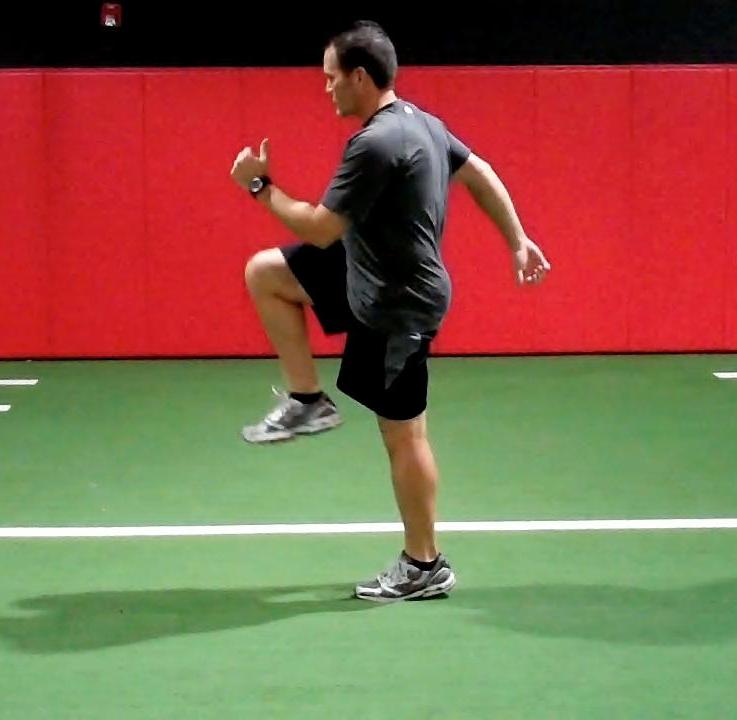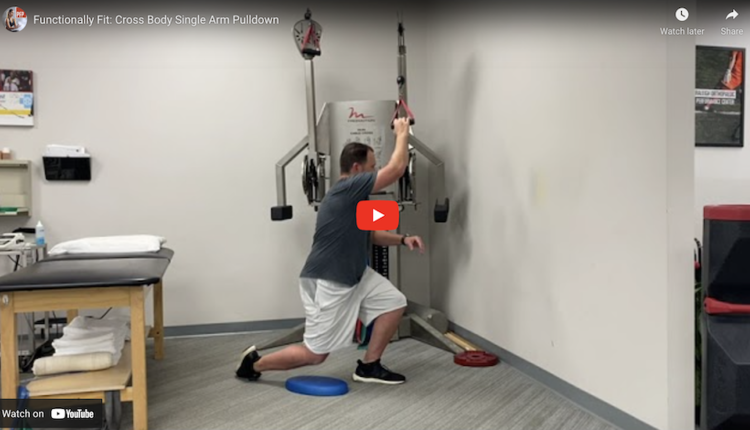![E-News-Column_2[1] E-News-Column_2[1]](https://cms-static.wehaacdn.com/fit--pro-com/images/E-News-Column_2-1-.2521.0.0.jpg)
| Brian demonstrates an exercise that will help increase hip mobility/stability, hamstring flexibility and desirable strength and balance for optimal physical performance in your clients. Note: Some prefer to use the term RDL (Romanian dead lift), while others like SLDL (stiff legged dead lift) when referring to the first phase of this exercise. Call it what you like as long as you can perform it correctly. See 'Related Resources' below for past Functionally Fits and other exercises and training tips. |
Execution:
 |  |  |
 |  |
Perform 2-3 sets of 10 on each leg, alternating sidesbetween sets. Remember to halt thedescent once the limits of your hamstring flexibility prevents motion withoutlumbar spine flexion.
Application:
Many of the clients you see will lack hipmobility/stability, hamstring flexibility and desirable strength and balancefor optimal physical performance. Thisexercise is the natural combination of a fluid single leg RDL and A march. It is ideal for athletes, runners and thosesuffering from single limb imbalances.
It encourages and promotes:
- Dynamic hamstring flexibility
- Gluteal muscle strengthening on the stance leg
- Hip flexor strengthening on the non-stance leg
- Proper arm and leg action desired for sprinting
- Single limb proprioception & frontal plane knee stability
I prefer to use this activity in my dynamic warm-up seriesas it encourages posterior chain and hip muscle activation patterns I findlacking in many people. If clientsstruggle to master the drill, simply break it down into A marches and RDLsbefore putting the two together.Consider allowing the client to use mild toe touch and/or upper bodyassistance as needed until they master balance and form.
Precautions:
Be sure to monitor form closely and avoid lumbar spineflexion at all times. Active lumbar discpathology and poor balance may exclude some from utilizing this exercise.
Brian Schiff, PT, CSCS (www.brianschiff.com) is a licensed physical therapist,respected author and fitness professional. He became a Certified Strength and ConditioningSpecialist (CSCS) in 1998. Currently, he serves as the supervisor at theAthletic Performance Center in Raleigh, NC. Brian presents nationally atseveral professional conferences and seminars on injury prevention, rehab andsport-specific training.














